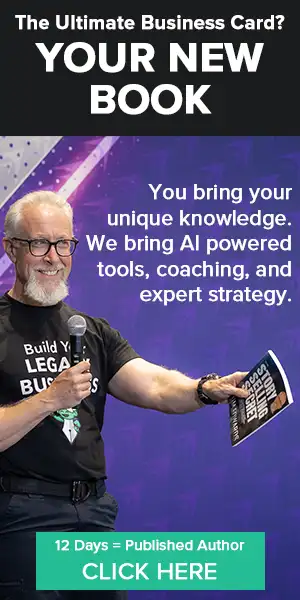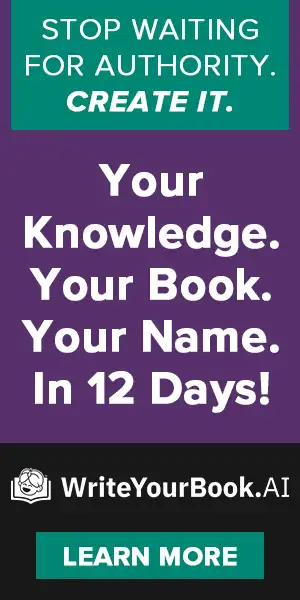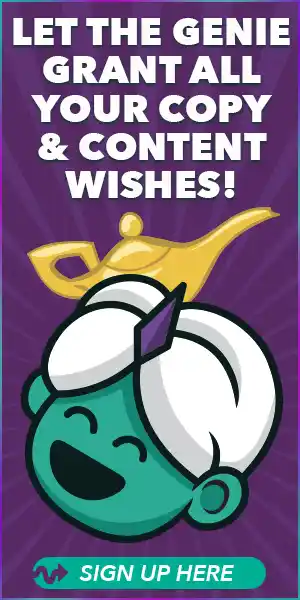Article of the Week
When & WHY You Should Never Tell Your “Origin” Story
 Being able to tell your origin story is incredibly important in many different situations. Whether you’re doing a sales pitch, giving a presentation, or simply introducing yourself, sharing your background can provide valuable context and build stronger connections. People are naturally curious about other people’s experiences and journeys, and your origin story can help humanize you, making you more relatable and trustworthy.
Being able to tell your origin story is incredibly important in many different situations. Whether you’re doing a sales pitch, giving a presentation, or simply introducing yourself, sharing your background can provide valuable context and build stronger connections. People are naturally curious about other people’s experiences and journeys, and your origin story can help humanize you, making you more relatable and trustworthy.
People do care about where you came from and your experiences, as that information can offer crucial context in understanding your perspective and expertise. In sales situations or business interactions, for instance, explaining your background can help to establish credibility and demonstrate the journey that equipped you with unique insights or skills.
When used appropriately, your origin story is an effective tool to enhance your message and create a compelling narrative for just about anything.
However, telling that specific story at an inappropriate time can transform it from a powerful tool into a self-serving monologue that turns people off in a BIG way! Timing and relevance are critical when sharing your origin story. Inappropriate timing can make it seem like an egotistical dork. Bottom line, it can come across as “cringy” (which will detract from the main message you’re trying to convey).
As a quick reminder, your origin story is essentially the tale of how you discovered, learned, or achieved something significant, and how those experiences brought you to where you are today. It’s typically a VERY detailed recount of your personal or professional journey, often highlighting challenges and triumphs along the way. However, sharing ALL those details isn’t always necessary or appropriate, especially if your audience is looking for a concise and pointed explanation.

There are times when sharing all that level of detail leads to information overload, causing people to roll their eyes and mutter “too much information” or “TMI.”
Overloading your audience with every detail of your journey can be overwhelming and counterproductive. It’s important to always be mindful of the level of detail required for the situation at hand to keep your audience engaged and focused.
This issue commonly arises when you give too much background information in situations where you could easily provide a succinct explanation of how you learned something or came to a realization. Instead of bogging down your audience with every detail of your story, consider the context of where you’re using the story and what information is truly necessary to get your message across effectively.
Often, a more streamlined approach has a LOT more impact.
A much more appropriate approach utilizes what is known as “The Epiphany Bridge.” The Epiphany Bridge story is a condensed and focused version of an origin story, emphasizing the moment of realization or discovery rather than the entire journey. This approach is designed to convey the essential insights without overwhelming your audience with unnecessary details.
The “6C Story” pattern, which encompasses Characters, Context, Conflict, Climax, Closure, And Conclusions, is a powerful and versatile framework for crafting an Epiphany Bridge story. This pattern allows you to create a custom story that is tightly focused and relevant to your current point, ensuring you create an engaging message. Whether explaining why you tie your shoes a certain way or how you discovered the nature of the universe, the 6C Story framework can help maintain clarity and impact.
A great example of using a 6C story instead of a full Origin story is when you recount a specific event, like launching a product that initially failed, then making adjustments that led to significant success. No one needs the minutiae of your first sales letter or the books you read—they are interested in the actionable insights and outcomes THEY can use themselves.
Tailoring your story to be specific and relevant can make it much more effective and well-received by every audience!
So, while the origin story is crucial in establishing who you are and where you came from, use it wisely. Overuse or sharing it inappropriately can alienate your audience and actually hurt you by turning people off.
By recognizing when to use a succinct, focused narrative like The Epiphany Bridge, you can maintain your audience’s interest and convey your points more persuasively and effectively… which creates a win-win-win all the way around!
Ready to get your hands on AI powered tools that will help you tell your story in a way that helps you connect with your target audience? Discover AI powered tools, training, and community with CopyandContent.AI.
👉 Check out CopyandContent.AI now and transform your storytelling skills!
Facebook • Instagram • Twitter • LinkedIn • Pinterest • Podcast • TikTok • YouTube • LinkTree







Leave a Reply